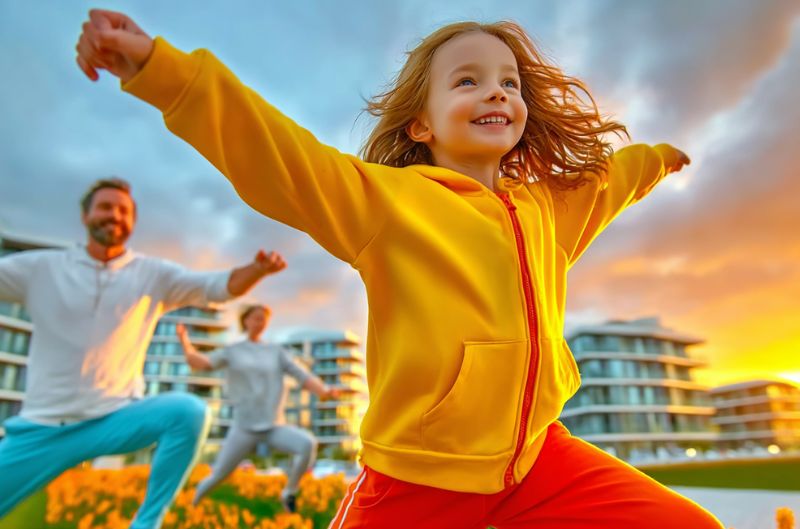
Parks and Recreation Builds Community
Author: Austin Stanfel
In an era marked by rapid urbanization and growing social isolation, parks and recreation spaces have emerged as vital infrastructure for building stronger, healthier, and more connected communities. Far beyond their role as green oases, parks serve as the beating heart of neighborhoods—spaces where people of all ages, backgrounds, and abilities come together to play, relax, celebrate, and forge meaningful connections.
Parks as the Social Fabric of Community Life
-
Social Cohesion and Connection
Parks are uniquely positioned to foster social cohesion. Research shows that residents of cities with high-quality park systems are more socially connected and engaged with their neighbors than those in cities with fewer or lower-quality parks. Parks provide neutral, inclusive spaces where people naturally encounter one another, bridging divides across age, income, and cultural backgrounds. These interactions—whether during a community festival, a pickup basketball game, or a quiet walk—help build trust, empathy, and a sense of belonging.
A 2024 report by the Trust for Public Land found that cities with top-ranked park systems had 26% more social connections between low- and high-income individuals and 60% higher volunteer rates than those with lower-quality parks. Such cross-group relationships are essential for social mobility, civic engagement, and overall community resilience.
-
Programming and Activation
The mere presence of a park is not enough; active programming—such as concerts, sports leagues, fitness classes, and cultural festivals—draws diverse groups together and animates public space. Parks departments and community organizations play a crucial role by designing events and amenities that reflect local needs and identities, ensuring that parks serve as vibrant gathering places for all.
Health, Wellness, and Quality of Life
-
Physical and Mental Health Benefits
Parks and recreation facilities are proven engines of public health. Access to parks encourages physical activity, which reduces the risk of chronic diseases, lowers stress, and improves overall well-being. Studies show that individuals who use parks are three times more likely to achieve the recommended levels of physical activity than those who do not. Even brief exposure to green space can decrease blood pressure, heart rate, and symptoms of anxiety and depression.
-
Family and Intergenerational Bonds
Parks offer spaces for families to bond—whether through picnics, playground visits, or community celebrations. Multigenerational amenities ensure that children, parents, and grandparents alike find opportunities for enjoyment and connection, strengthening familial ties and creating lasting memories.
Inclusion, Equity, and Social Capital
-
Accessible Spaces for All
One of the most potent aspects of parks is their accessibility. As free or low-cost public spaces, parks level the playing field, offering opportunities for recreation and relaxation regardless of income, age, or ability. Inclusive design—such as wheelchair-accessible trails, sensory-friendly playgrounds, and multilingual signage—ensures that everyone can participate fully in community life.
-
Building Social Capital
Parks are engines of social capital—the networks of relationships and trust that underpin strong communities. Renovations and improvements to park spaces have been shown to create more inclusive atmospheres, increase perceived safety, and foster interactions among diverse groups, transforming parks into “unifying forces” within neighborhoods. These connections lead to increased civic engagement, volunteerism, and greater satisfaction with local government.
Economic and Environmental Impact
-
Boosting Local Economies
Parks are not just social assets; they are economic drivers. Proximity to parks increases property values, attracts homebuyers, and enhances municipal revenues through increased tax bases. Parks also support local businesses by drawing visitors for festivals, sports tournaments, and cultural events, generating tourism revenue and supporting jobs.
-
Environmental Resilience
Beyond their social and economic benefits, parks provide critical environmental services, preserving native habitats, improving air and water quality, and helping to manage stormwater, which makes communities more resilient in the face of climate change and urban development.
Strategies for Maximizing Community Impact
- To fully realize the community-building potential of parks and recreation, experts recommend:
- Prioritizing community engagement at every stage—from planning and design to programming and maintenance.
- Investing in inclusive amenities and accessible design to ensure parks serve all residents.
- Activating parks with diverse programming that reflects local cultures and interests.
- Sustaining funding and partnerships among governments, nonprofits, and private stakeholders to maintain and improve park spaces.
Conclusion
Parks and recreation spaces are more than just leisure amenities—they are foundational to the social, physical, and economic well-being of communities. By providing inclusive, engaging, and well-maintained public spaces, parks help bridge divides, foster a sense of belonging, and build the social capital that underpins vibrant, resilient communities. As cities and towns continue to grow and change, investing in parks and recreation is investing in the very fabric of community life.

